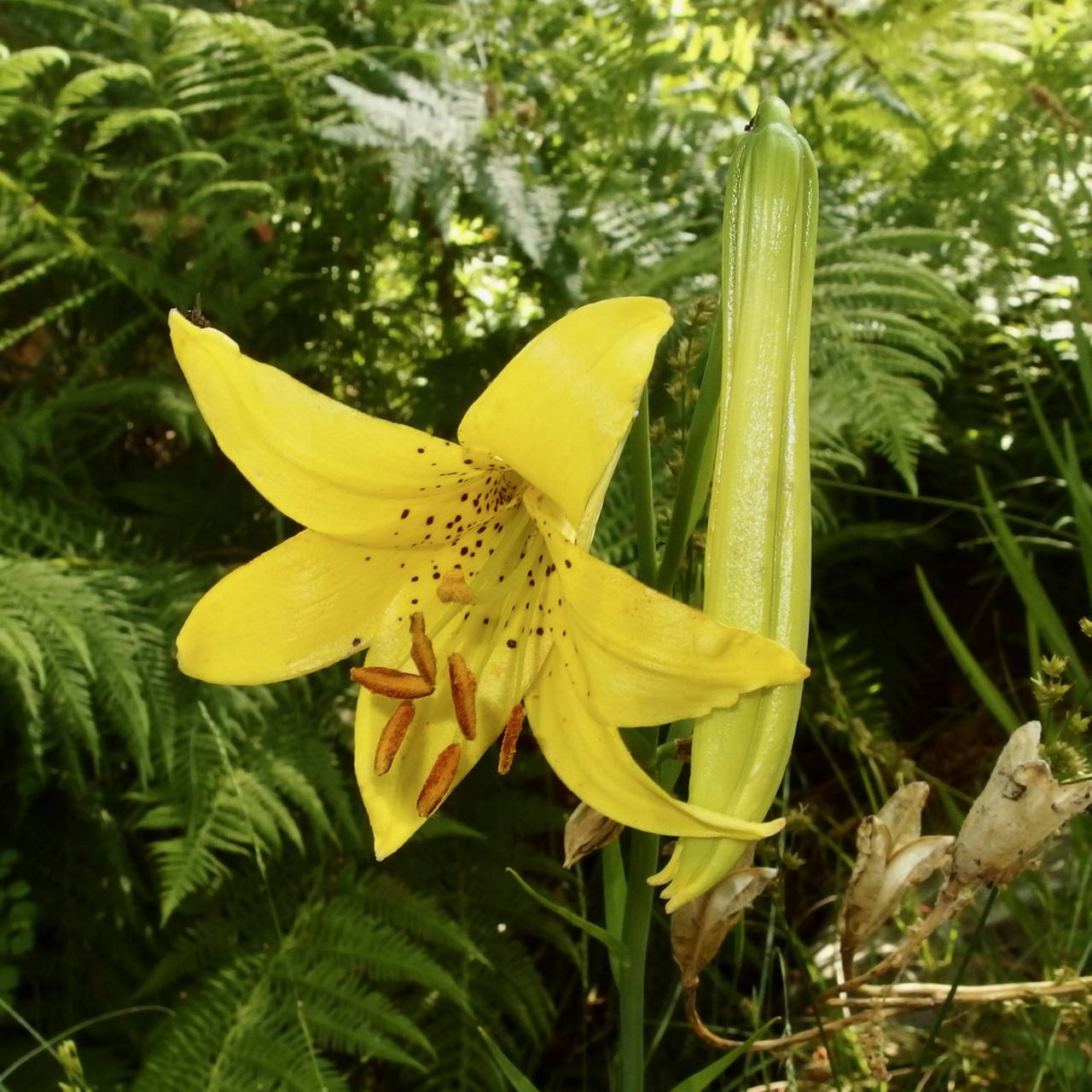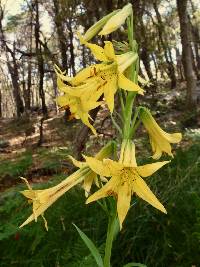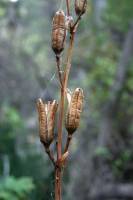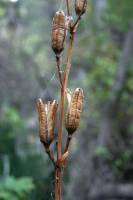Lilium parryi
|
|
|
|
Family: Liliaceae
Lemon Lily, more...Parry lily
[Lilium parryi var. kessleri A. Davids.] |
Bulbs rhizomatous, unbranched, continuously scaly, 1.5-4.7 × 3.5-11 cm, 0.2-0.6 times taller than long; scales (1-)2(-4)-segmented, longest 0.9-3.7 cm; stem roots absent. Stems to 1.9 m. Buds rounded in cross section. Leaves occasionally scattered in young plants or in 1-5 whorls or partial whorls, 3-18 leaves per whorl, ± horizontal and drooping at tips or ascending, 7.8-29 × 0.5-4.9 cm, 2.6-29 times longer than wide; blade elliptic to narrowly linear, or ± obovate, often lanceolate in distal leaves, margins not undulate, apex acute, often narrowly so; veins and margins ± smooth abaxially. Inflorescences racemose, 1-31-flowered. Flowers opening before dusk, horizontal or somewhat nodding, slightly bilaterally symmetric, strongly fragrant; perianth funnelform; sepals and petals recurved 3/5 along length from base, lower less recurved than upper and forming landing platform, bright yellow with sparse, usually minute maroon spots, not distinctly clawed; sepals not ridged abaxially, oblanceolate, 7.7-10.7 × 1.1-1.7 cm; petals noticeably wider than sepals, often very wide distally, 7.8-10.6 × 1.1-2.1 cm, apex widely acute or sometimes obtuse; stamens barely exserted; filaments barely spreading, diverging at 5°-12°; anthers pale magenta-brown, 0.8-1.4 cm; pollen rust-orange or orange-brown; pistil 5.3-9.3 cm; ovary 1.6-2.9 cm; style green, often pale; pedicel 2-17.5 cm. Capsules 3.9-5.9 × 1.1-1.7 cm, 2.5-4.4 times longer than wide. Seeds 141-303. 2n = 24. Flowering summer (late May--early Sep). Meadows, streams, and willow (Salix spp.) thickets in mixed conifer forests; 1300--2600 m; Ariz., Calif. Plants in Arizona start to bloom in May (T. H. Kearney and R. H. Peebles 1960), while the majority of California plants flower in July and August. Plants from the San Gabriel Mountains of California sometimes have wider leaves and have been given status as Lilium parryi var. kessleri, but this variation is due primarily to the rather shaded habitat of many of these populations. No significant vegetative discontinuity can be recognized across the range of this species, so no varieties are recognized here. Lilium parryi probably arose from an ancestor in common with L. pardalinum (M. W. Skinner 1988), and subsequently diverged to become pollinated by various hawkmoths (family Sphingidae). The flowers are remarkably similar in form and function to those of L. washingtonianum, which is also moth-pollinated, but this resemblance is due to evolutionary convergence.
|




